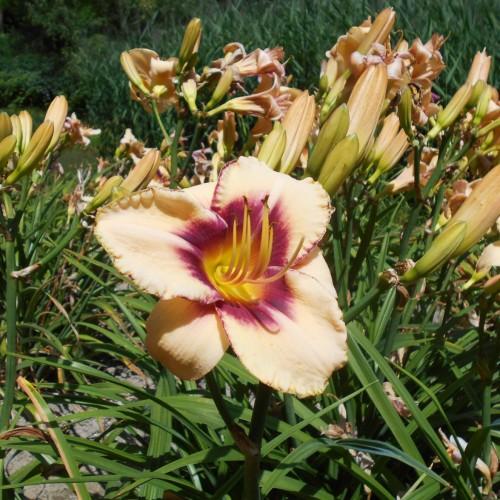
daylily
Hemerocallis 'Border Class'
Cycle:
Herbaceous Perennial
Watering:
Average
Hardiness Zone:
3 - 9
Flowers:
Flowers
Sun:
Full sun,part shade
Leaf:
Yes
Growth Rate:
Low
Maintenance:
Low
Drought Tolerant:
Yes
Salt Tolerant:
Yes
Care Level:
Medium
watering
Daylilies (Hemerocallis 'Border Class') are relatively low-maintenance and easy to care for. They prefer well-drained, moderately fertile soil and full sun or partial shade. To ensure vibrant blooms, it's important to properly water these plants. Daylilies should be watered deeply and thoroughly once every week during the growing season, and less frequently during the winter. Be sure to soak the soil until moisture is visible at the surface. It is also important to let the bed dry out between waterings to avoid root rot and other diseases. If you live in an area with high temperatures or dry climates, more frequent waterings may be necessary to keep your daylilies from wilting. You may also have to water more often during periods of intense heat or drought. It is also important to fertilize your daylilies regularly throughout the growing season. A balanced fertilizer and rich compost are the best options. In summary, daylilies should be watered thoroughly once per week during the growing season and fertilized regularly. During hot or dry weather, additional waterings may be necessary.
sunlight
Daylily (Hemerocallis 'Border Class') should be grown in a sunny to partly sunny location with at least 6 hours of direct sunlight each day. It can tolerate some afternoon shade, especially in hot climates. When growing daylily in warmer climates, try to provide morning sun with afternoon shade for best results.
pruning
Daylily (Hemerocallis 'Border Class') requires pruning every 2-3 years, typically in late winter or early spring (February or March). This is done to tidy up the foliage, remove any dead or diseased stems, and control the size and shape of the plant. Additionally, pruning of daylilies may encourage more flowers to be produced. Start by cutting the foliage back to about 4 inches from the ground and discarding or composting the debris. Additionally, any diseased leaves and stems should be removed and discarded. Once the foliage has been pruned, inspect the crown (the center of the plant) and remove any dead or dying tissue; this helps to keep the daylily healthy. If needed, also trim any extra foliage, which helps to shape and control the size of the plant. Afterwards, fertilize the plant to encourage healthy growth for the upcoming season.
